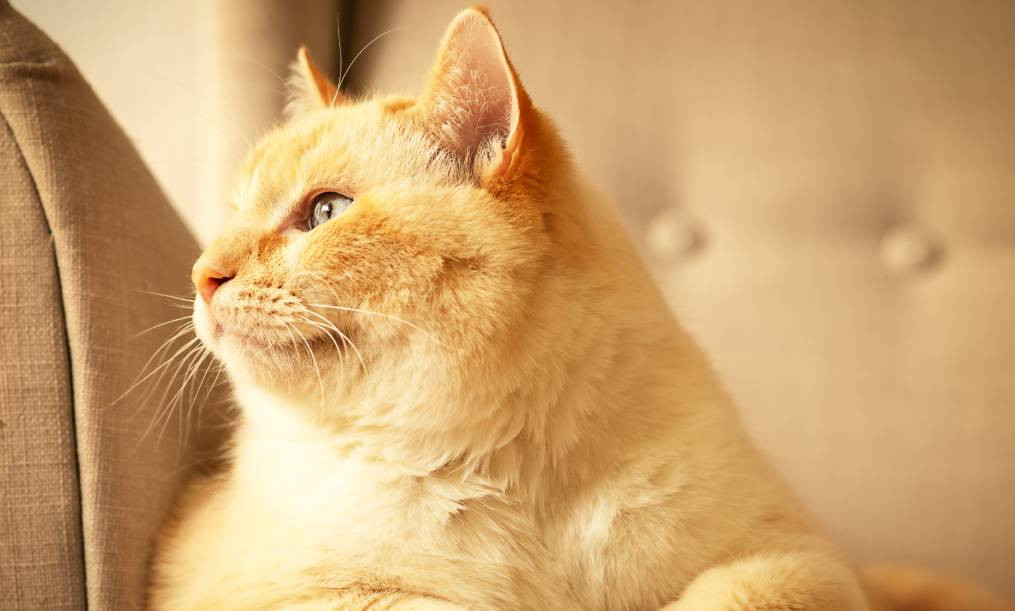Understanding and Managing Feline Hyperthyroidism

Feline hyperthyroidism is a prevalent endocrine disorder that primarily affects older cats. This condition, characterized by an overproduction of thyroid hormones, can lead to a multitude of health issues if left untreated. Recognizing and understanding the symptoms and treatment options are crucial for ensuring the well-being of your feline companion.
What is Feline Hyperthyroidism?
Feline hyperthyroidism is a disorder that arises when the thyroid glands in a cat's neck produce an excessive amount of thyroid hormones, particularly thyroxine (T4) and triiodothyronine (T3). This hormonal imbalance significantly increases the cat's metabolic rate, leading to various health issues. The thyroid glands, located near the trachea, are essential for regulating metabolism, but when they become overactive, typically due to non-cancerous tumors called adenomas, they can cause widespread effects on the cat's body.
Cats with hyperthyroidism often show several symptoms, including:
- Weight loss despite having a normal or increased appetite
- Hyperactivity and restlessness, making them more active and anxious than usual
- Increased thirst and urination due to the body's heightened metabolic demands
- Vomiting and diarrhea, as the digestive system is affected by the rapid metabolism
- Poor coat condition, with fur that appears unkempt or greasy
- Changes in behavior, such as increased vocalization, irritability, and sometimes aggression
These symptoms can develop gradually, often making early detection challenging. Hyperthyroidism is particularly common in cats over the age of ten, making regular veterinary check-ups essential for early diagnosis and treatment. Understanding this condition and its effects helps cat owners recognize the need for timely veterinary intervention, ensuring their feline friends receive the necessary care to manage this disorder effectively.
Symptoms and Diagnosis of Feline Hyperthyroidism
Recognizing the symptoms of feline hyperthyroidism is key to seeking timely veterinary care. Common symptoms include:
- Weight Loss: Despite having an increased or even ravenous appetite, cats with hyperthyroidism often lose weight.
- Hyperactivity: Increased restlessness and hyperactivity are typical, with cats becoming unusually energetic.
- Increased Thirst and Urination: Cats may drink more water and urinate more frequently, a condition known as polyuria/polydipsia.
- Poor Coat Condition: Their fur may appear unkempt, greasy, or matted.
- Gastrointestinal Issues: Vomiting and diarrhea are also frequent symptoms.
- Behavioral Changes: Cats may become more vocal, irritable, or display unusual behaviors.
Diagnosis typically begins with a thorough physical examination by a veterinarian, who may note signs such as an enlarged thyroid gland or a rapid heart rate. Blood tests are crucial in confirming the diagnosis, measuring levels of thyroid hormones (T3 and T4). Elevated levels of these hormones usually indicate hyperthyroidism. In some cases, additional tests like a thyroid scan or imaging studies may be performed to assess the extent of the disease and rule out other potential causes of the symptoms.
Early diagnosis is essential as untreated hyperthyroidism can lead to serious complications, including heart disease and high blood pressure. Regular veterinary check-ups, especially for older cats, are vital for early detection and effective management of this condition.
Treatment Options for Feline Hyperthyroidism
Several treatment options are available for managing feline hyperthyroidism, each with its own benefits and considerations. These include:
- Medication: Antithyroid drugs, such as methimazole, help reduce thyroid hormone production. While effective, they require lifelong daily administration and regular blood tests to monitor thyroid levels and adjust dosages.
- Dietary Changes: Prescription diets designed to limit iodine intake can help manage thyroid hormone production. This option may be suitable for cats that tolerate dietary restrictions well.
- Surgery: Thyroidectomy, the surgical removal of the overactive thyroid gland, can be a permanent solution. However, it carries risks associated with anesthesia and potential complications, such as damage to surrounding tissues.
- Radioiodine Therapy: This advanced treatment involves administering a radioactive iodine isotope (I-131), which selectively destroys overactive thyroid tissue while sparing normal tissue. It’s a one-time treatment that is highly effective and minimally invasive, with a high success rate and low risk of side effects.
This treatment is particularly advantageous as it typically cures the condition with a single injection, offering a long-term solution without the need for ongoing medication or invasive surgery.
Ensuring Optimal Health for Your Cat
Managing feline hyperthyroidism is crucial for the health and longevity of your cat, especially in older felines. Recognizing the symptoms and understanding the available treatments can significantly improve your cat's quality of life. The Complete Cat Veterinary Clinic in Brookfield, Connecticut, offers comprehensive care, including cutting-edge radioiodine therapy, a safe and effective treatment for hyperthyroidism. If you are in Brookfield or nearby cities like Danbury, Newtown, or Ridgefield, and suspect your cat may have hyperthyroidism, don’t hesitate to seek professional veterinary care.
Book an appointment with The Complete Cat Veterinary Clinic today to ensure your cat receives the best possible care.


